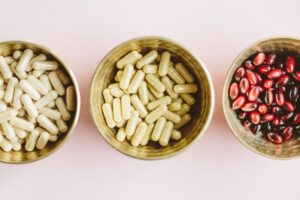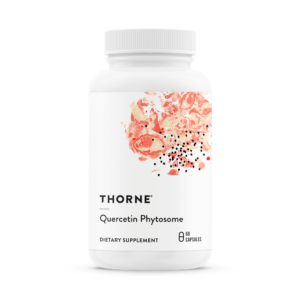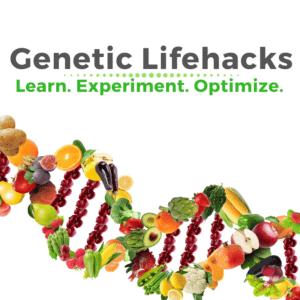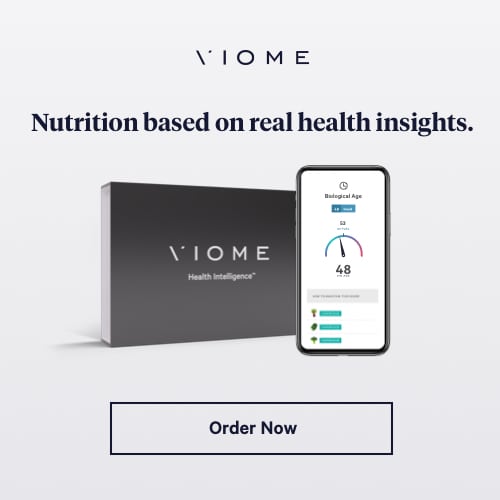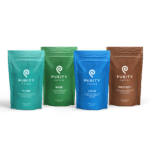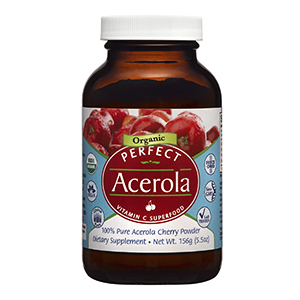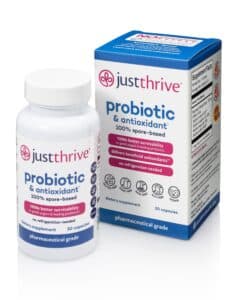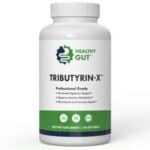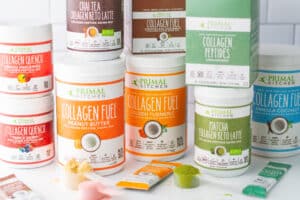
What is The Best Test for Histamine Intolerance
What is the best test for histamine intolerance?
Are you giving up your favorite foods because you believe you are histamine intolerant to help relieve your symptoms?
Then you are probably looking for a test to determine if you are histamine intolerant and what might be the cause of your food intolerances.
After all, who wants to give up wine, cheese, yogurt, and avocados forever?
Determining if you are histamine intolerant can be frustrating as there is a lack of understanding and even recognition by most healthcare practitioners.
One of the causes of the lack of recognition of histamine intolerance being the cause of your symptoms is that there are currently no clinically proven tests for histamine intolerance.
Most of the tests for histamine intolerance in conventional medicine have not proven to be very accurate, including the often-used test known as testing for tryptase serum levels.
But could there be integrative tests not used in conventional medicine that could help you determine if you are histamine intolerant? And what might be the underlying cause of your histamine intolerance?
What is Histamine Intolerance?
Histamine is a chemical that our bodies releases and is used for many different purposes, including playing a major role in our immune system – think allergies.
Because it is technically a toxic compound, histamine needs to be degraded or broken down to prevent symptoms like digestive disturbances, insomnia, migraines, and allergic symptoms.
Most of the food we eat also contains histamine as a natural chemical that, in most cases, is produced by bacteria coming into contact with the food and converting histidine (protein building block) to histamine.
For instance, histamine levels increase with fermented foods as a reaction between the bacteria and histidine. Fish is exceptionally high in histidine, so fish that has been left out at room temperature for an extended period of time before cooking or eaten as a leftover will be very high in histamine.
Like other food intolerances, enzymes are used to break down chemicals and compounds in the food. For instance, lactase is the enzyme that breakdowns lactose (milk sugar), and a lack of lactase will lead to lactose intolerance.
Histamine that our bodies release and the histamine found in food are broken by two main enzymes: diamine oxidase (DAO) and histamine-N-methyltransferase (HNMT).
Histamine intolerance develops when histamine levels increases or our histamine “bucket” is full due to a lack of these enzymes that degrade histamine.
Why are Symptoms so Varied with Histamine Intolerance?
Histamine is synthesized and stored in many different parts of our body to help perform many functions.
One function is to support a healthy immune response to foreign invaders. When we develop allergies, we release high amounts of histamine hence the use of antihistamines to help control excessive histamine.
In addition, to being stored in our immune system, histamine is stored in gastric cells known as enterochromaffin cells, lymph nodes, and the thymus allowing histamine to be used for many functions, including stimulating gastric acid (stomach acid), healthy inflammatory response, and helping to manage blood pressure.
Because histamine is also produced as a neurotransmitter (brain signaling chemical), high histamine levels can impact our mental health and ability to sleep soundly throughout the night.
So, you can see how high histamine levels can lead to many symptoms, including digestive disturbances, insomnia, and more.
- Migraines, Headaches
- Insomnia
- Brain Fog
- Nausea
- IBS – Both Constipation & Diarrhea
- Anxiety
- PMS – Estrogen Imbalances
- Thyroid Dysfunction
- Nerve & Muscle Pain
- Allergic Symptoms
- Autoimmune Flares – Hashimoto's, Psoriasis
What Are Causes of Histamine Intolerance?
We have been eating foods high in histamine for centuries as we use fermentation, drying, and smoking as a method to preserve our food. These preservations methods create high levels of histamine in our food like smoked fish, dried beef, or sauerkraut.
Why are people suddenly struggling with eating foods high in histamine like fermented vegetables, yogurt, and preserved meats? One of the reasons is that histamine intolerance was not recognized as a disorder until the 21st century.
And we did not understand how histamine is degraded until recently with the continued research on gut health, the microbiome, and the genetics of histamine intolerance.
Determining the cause of histamine intolerance is exceptionally challenging as histamine has many functions in our body. High histamine levels can also cause various symptoms, from allergic symptoms to digestive disturbances.
More and more research is showing that histamine intolerance originates in the gut. Maybe this is because DAO is predominately produced in the gut, which helps to block and degrade histamine from our food.
Having intestinal permeability or leaky gut is now considered one of the leading causes of histamine intolerance as leaky gut decreases DAO. In addition, microbiome imbalances or dysbiosis, which plays a significant role in leaky gut, can increase histamine levels and lower DAO.
Are there other causes of histamine intolerance?
- Autoimmune Conditions, i.e., Crohn's, Ulcerative Colitis, or IBD
- Other Food Sensitivities & Intolerances (i.e., Gluten, Tyramine, Sulfur)
- Hidden Infections, i.e., Candida Overgrowth
- Hormones – Estrogen Dominance
- Chronic Stress
- Genetics
- Nutrient Imbalances
- Allergies
What are Some of the Tests for Histamine Intolerance?
Right now, the “gold standard test” for histamine intolerance is to complete a symptom/food journal like my journal for 30 days and see if high histamine foods may be the cause of your symptoms. Get my journal which includes a list of high histamine foods and cooking tips to lower histamine in your meals.
In addition to completing a journal and consuming a low histamine diet, try supplementing with DAO Enzyme like Histamine Manager. If these supplementing with DAO helps, then you most likely have a reduced DAO enzyme.
Histamine Digest – 30,000 HDU of Diamine Oxidase DAO per Serving – Digestive Enzyme to Help Block and Manage Food-Derived Histamine Intolerance, 60 capsules
Histamine Digest contains 30,000 HDU per serving of the active enzyme Diamine Oxidase (DAO) responsible for neutralizing histamine in your digestive tract. Due to genetics or autoimmune conditions, your body may not make enough DAO to degrade the histamine in your digestive tract.
Get 15% off – sign up for my Fullscript Account.
Doing a food/symptom journal will help you to identify if you are histamine intolerant and hopefully give you some relief from your symptoms. After all, it was how I discovered I was histamine intolerant and finally got some relief from my IBS, anxiety, psoriasis flare-ups, PMS, and migraines.
However, a food journal and supplements won't get down to the cause of your histamine intolerance. Knowing the cause of your histamine intolerance is the first step towards resolving histamine intolerance, reducing symptoms, and getting back to eating the foods you love.
Let's look at some of the tests for histamine intolerance, including those that will help you get down to the underlying cause.
- DAO Enzyme – Serum (Blood)
- Histamine – Serum (Blood)
- Tryptase
- Food Intolerances – Gluten
- Leaky Gut or Intestinal Permeability
- Neurotransmitters – Histamine, Glutamate (Urine)
- Genetics
Is Testing for Histamine and DAO Very Accurate for Histamine Intolerance?
Current research shows that testing for the DAO enzyme levels can be a reasonably accurate way to determine histamine intolerance. However, it does not determine the cause of histamine intolerance.
In one study, patients who struggled with histamine intolerance were found to have low DAO enzymes. It has also been shown that patients with IBD (Ulcerative Colitis, Crohn's) did have reduced DAO enzyme, and symptoms improved with a low histamine diet.
Testing for serum (blood) histamine and tryptase alone have not been shown to be an accurate method for testing for histamine intolerance. These tests are not as reliable to determine if you have histamine intolerance because blood samples are a moment in time as histamine is rapidly metabolized.
To test positive for histamine intolerance, you would have to either eat a meal high in histamine or have an “event” like an allergic reaction at that moment or shortly before your blood is drawn.
Tryptase, which is often used to diagnose mast cell activation syndrome (MCAS), samples would need to be taken throughout the day or during what they refer to as an “event” to be accurate.
However, testing for serum DAO and histamine can be a reliable test for histamine intolerance by looking at the ratio between DAO and histamine. For instance, if histamine is high with a low DAO, this could indicate histamine intolerance.
Can Testing for Leaky Gut Be an Accurate Test for Histamine Intolerance?
Since leaky gut is one of the leading causes of histamine intolerance, could a test for leaky gut be an accurate way to test for histamine intolerance and determine the underlying cause at the same time?
We do know that leaky gut often increases what is known as zonulin. With increased zonulin levels, you will see decreased DAO enzyme. And often times increased histamine intolerance.
One of the leading causes of leaky gut is gluten intolerance. What if you had a test that tested not only for leaky gut but also for gluten intolerance?
The at-home Wheat Zoomer test by Vibrant Wellness tests for both! In addition, it also tests for zonulin, giving you a good idea that if that level is high, most likely, your DAO is low.
Now you have a pretty good idea if you are histamine intolerant AND what the cause is! Learn more about my Wheat Zoomer Package and get started resolving histamine intolerance today.
WHEAT ZOOMER TEST
Easy At-Home Test For Gluten Intolerance/Leaky Gut
What is the Best Test for Histamine Intolerance?
What if there was a test that not only tested for leaky gut, but histamine, and DAO levels? And would test for possible dysbiosis or microbiome imbalances, another key cause of histamine intolerance.
With the Precision Point Diagnostics' Advanced Intestinal Barrier Assessment (AIBA), you can begin your journey toward resolving histamine intolerance. This integrative test tests histamine, DAO, zonulin, leaky gut, and possible bacterial infection. Remember bacterial imbalances in the microbiome promotes histamine release.
Whereas this test does not include testing for gluten intolerance, you can be pretty sure if zonulin levels are high, you may be intolerant to gluten.
The AIBA test is not only a key indicator of histamine intolerance; it will provide you with the underlying cause! Knowing the underlying cause is the key to overcoming histamine intolerance.
It will also give you the ability to rule out histamine intolerance as there are other intolerances and allergies that can have the same symptoms, like sulfur, glutamate, and an allergy to nickel.
By the way, many foods high in histamine are also high in nickel. Ruling out histamine intolerance may point you in the right direction!
Are you ready to begin resolving histamine intolerance and leaky gut? Get my Advanced Intestinal Barrier Assessment Package today. Payment plan also available.


